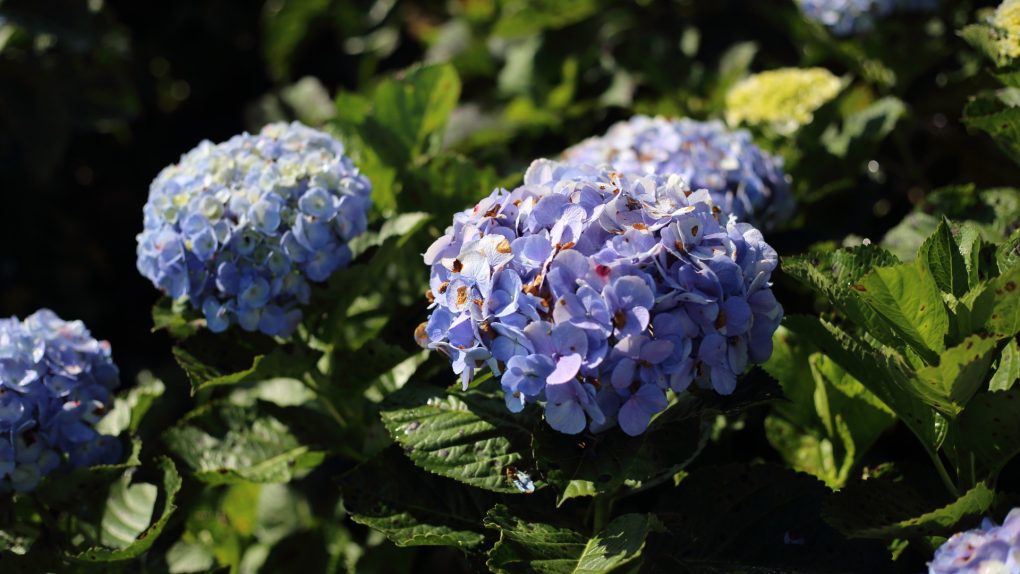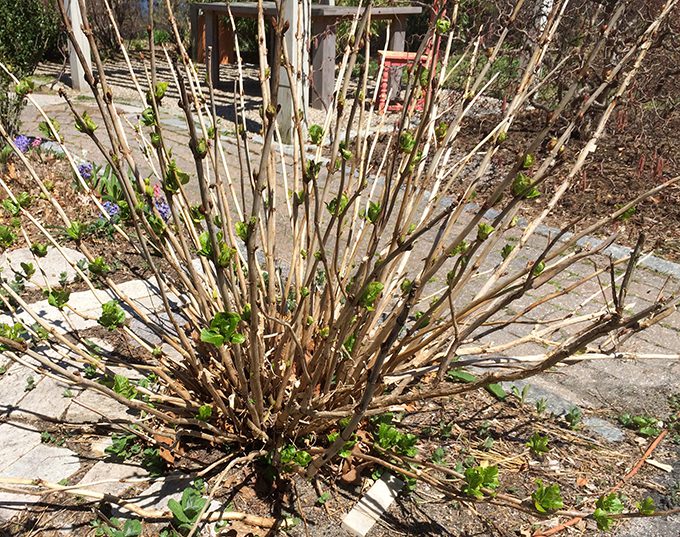Hyacinth lovers all over Cape Cod are checking the weather forecasts for March 21st and 22nd to see if the twenty-degree temperatures will hurt their plants’ buds. We are very worried about damage to our signature plant this year after last year’s Polar Vortex, which killed most of these shrubs to the ground and made them flower less. Here are our thoughts:
Hydrangeas are a beloved garden shrub, prized for their lush blooms in shades of pink, blue, purple, red, and white. However, these beauties are also somewhat finicky when it comes to cold tolerance. Understanding how well your hydrangeas can withstand freezing temperatures is key to keeping them healthy and floriferous.
The Different Types of Hydrangeas Have Varying Cold Tolerance
There are several different types of hydrangeas including
-
Bigleaf hydrangea (Hydrangea macrophylla) – The most common type grown in gardens Blooms on old wood.
-
Oakleaf hydrangea (Hydrangea quercifolia) – Named for its distinctive leaves. Blooms on old wood.
-
Mountain hydrangea (Hydrangea serrata) – A smaller shrub with delicate blooms. Blooms on old wood.
-
Panicle hydrangea (Hydrangea paniculata) – Large, cone-shaped blooms. Blooms on new wood.
-
Smooth hydrangea (Hydrangea arborescens) Blooms on new wood.
-
Climbing hydrangea (Hydrangea anomala subsp. petiolaris) – A vine species. Blooms on old wood.
The key thing to note is that bigleaf, oakleaf, mountain, and climbing hydrangea all bloom on old wood. This means their flower buds emerge in summer and must survive the winter in order to bloom the following year. Panicle and smooth hydrangeas bloom on new wood that grows each spring, making them better choices for colder climates.
Can Hydrangea Roots Survive Winter Cold?
The root system of most hydrangeas is quite robust and can tolerate very low temperatures. Bigleaf, oakleaf, and mountain hydrangeas have been known to survive temperatures as low as -15°F (-26°C) at the root level.
However, the above-ground parts of these plants, including the stems holding the flower buds, are less cold hardy than the roots. This disparity explains why many gardeners have the experience of hydrangeas not blooming after a frigid winter, even though the shrub itself survives.
What Temperature Kills Hydrangea Blooms?
Hydrangea macrophylla, serrata, quercifolia, and anomala flower buds can typically withstand temperatures down to roughly -5°F (-20°C) before sustaining damage. However, a period of unusually warm weather in late fall can negatively impact their cold hardiness.
If temperatures drop rapidly from the 60s and 70s F down to below freezing, tender growth and flower buds will be much more susceptible to damage. A hard frost of 25°F (-4°C) or below can kill exposed blooms during such abrupt cold snaps.
In general, temperatures of 20°F (-7°C) or below may compromise overwintering hydrangea flower buds. And during an extreme cold event, such as temperatures dipping below 0°F (-18°C), most old-wood hydrangea blooms will probably be lost.
Protecting Hydrangeas from Winter Damage
If you live in an area with winters that dip below the ideal temperatures for your particular hydrangeas, there are some tricks to help protect them:
-
Choose protected locations out of the wind. The desiccating effects of winter winds can harm buds even if the temperature itself is not extreme.
-
Wrap or insulate pots for container-grown plants.
-
Mulch around the base of in-ground hydrangeas. Aim for 3-6 inches of shredded leaves, evergreen boughs, or other organic materials.
-
Erect a temporary barrier such as burlap supported by stakes to shield plants from wind.
-
Water well in late fall so soils are moist heading into winter. Dry soils worsen the effects of cold.
-
Apply antidesiccant spray to foliage in early winter. Products like Wilt-Pruf form a protective film against moisture loss.
-
Delay pruning until spring so old wood remains intact, insulating buds.
-
Choose cold-tolerant hydrangea species and cultivars known to be reliable in your climate. Oakleaf (H. quercifolia), smooth (H. arborescens), and panicle (H. paniculata) types are better choices for colder regions.
The Impact of Fluctuating Winter Temperatures
Sudden temperature changes in winter can be just as damaging, if not more so, than sustained periods of cold. For example, a stretch of relatively warm days in February may spur hydrangeas to break dormancy too early. Subsequent hard freezes can then kill newly emerged tender growth.
These erratic swings from freezing to thawing and back again are unfortunately becoming more common due to climate change. Choose planting sites with protection from harsh winds to help buffer hydrangeas from these ups and downs as much as possible.
Selecting Cold-Tolerant Hydrangea Varieties
While hydrangea macrophylla species are only rated hardy to zone 5 or 6, some exceptional cultivars have proven themselves in even colder climates.
When shopping for hydrangeas, look for selections described as enduring winters in zones 4 or even zone 3. Here are some great options:
For Bigleaf Hydrangea
-
Endless Summer® series – Bred to rebloom on both old and new wood. The original Endless Summer is rated for zone 4. Newer introductions like Blushing Bride and Twist-n-Shout are typically zoned for 5 or 6.
-
Let’s Dance® series – Reblooming bigleaf hydrangea series bred for cold hardiness to zone 4. Varieties include Blue Jangles, Diva, and Rhythmic Blue.
-
Lady in Red – An exceptionally hardy mophead hydrangea that withstands cold to zone 4.
For Oakleaf Hydrangea:
-
Snow Queen® – A popular cold-tolerant oakleaf hydrangea rated for zone 4 winters.
-
Alice – Zone 4 rating. Produces an abundance of long, white flower panicles.
-
Snowflake® – Compact double-flowered form that is very winter hardy. Good for zone 4 gardens.
For Panicle Hydrangea:
-
Limelight – Extremely winter hardy, blooming reliably even in zone 3. Lime-green blooms mature to pink or burgundy.
-
Little Lime® – A smaller variety of Limelight rated for zone 3. Maxes out at 5 feet tall.
-
Little LambTM – Dwarf panicle hydrangea that withstands zone 4 winters. Grows to just 3 feet.
Be Prepared if Blooms Are Compromised
Even with the best cold tolerance ratings, freak weather events can happen. If your beloved hydrangeas fail to flower after a bout of unusually frigid temperatures, resist the urge to cut back stems in spring. Give them time to regenerate new growth from the base. With patience and proper care, they should regain their glory for the following bloom season.
By understanding their ideal temperature tolerances and taking protective measures in winter, you can continue enjoying hydrangeas in your garden for years to come. Paying attention to flower bud hardiness will ensure the most abundant blooms each summer. With strategic choices of planting sites and cultivars, even gardeners in chilly climates can find success with these magnificent shrubs.

Can I throw a sheet or blanket over my plants?
Unfortunately, a sheet, blanket, or tarp will only keep plants safe when a short drop below 32° is expected. When it gets down to the 20s, these kinds of coverings won’t help because there isn’t a heat source under them to keep things warmer. As long as you built a small greenhouse over each plant to heat the soil for a few days before the temperature dropped, that might help. But most people can’t do that, and it would be a waste of time and money.
Can’t I spray something on to protect those buds?
Although it would be great if sprays like Wilt-pruf could protect Hydrangea buds from cold damage, there isn’t one that can.

What temperature is too cold for hydrangeas?
FAQ
What temperature is too cold for hydrangeas?
Can I leave my potted hydrangea outside?
When should I bring hydrangeas inside?
Can hydrangeas handle a freeze?
- A Complete Guide to Caring for Yuki Cherry Blossom Shrub - January 23, 2025
- Identifying Red Hot Poker Seeds: What to Look For When Harvesting Torch Lily Pods - January 23, 2025
- A Complete Guide to Harvesting Evening Primrose Seeds - January 23, 2025
